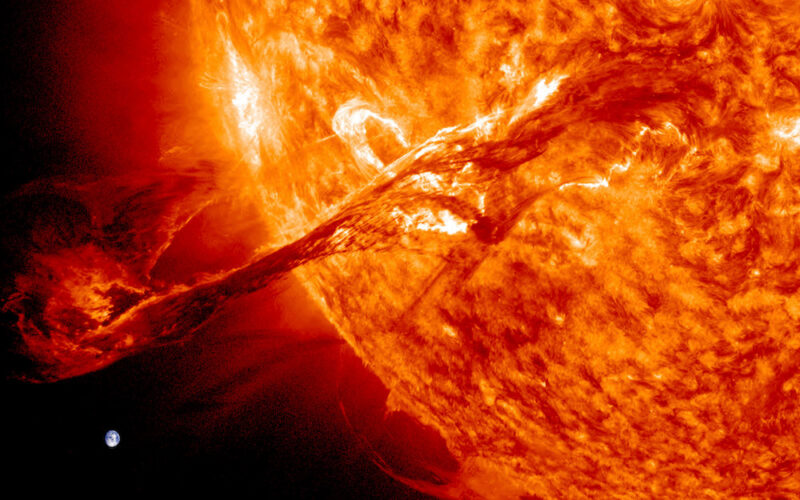Solar flares are powerful eruptions of electromagnetic radiation from the Sun’s surface, lasting from minutes to hours. These intense bursts of energy are classified based on their X-ray emissions, with X-class flares being the most powerful, followed by M, C, B, and A-class flares in descending order of intensity. Solar flares typically originate in active regions near sunspots, where strong magnetic fields interact and release stored energy.
During periods of high solar activity, the Sun can produce up to 20 solar flares per day. These events can have significant impacts on Earth, potentially disrupting radio communications, affecting satellite operations, and even causing power grid fluctuations. The energy released by a single solar flare can be equivalent to millions of 100-megaton hydrogen bombs, making them among the most powerful explosive events in our solar system.

Interestingly, the temperature inside a solar flare can reach up to 100 million degrees Kelvin, far hotter than the Sun’s core, which is about 15 million degrees Celsius. Solar flares are often, but not always, accompanied by coronal mass ejections (CMEs), which are large expulsions of plasma and magnetic field from the Sun’s corona.
Scientists monitor solar flare activity closely due to its potential impact on Earth and space-based technologies. The frequency and intensity of solar flares vary with the Sun’s 11-year activity cycle, with more flares occurring during solar maximum. While most solar flares do not directly threaten Earth due to our planet’s protective magnetic field and atmosphere, extremely powerful flares can pose risks to astronauts, satellites, and ground-based electronic systems.










